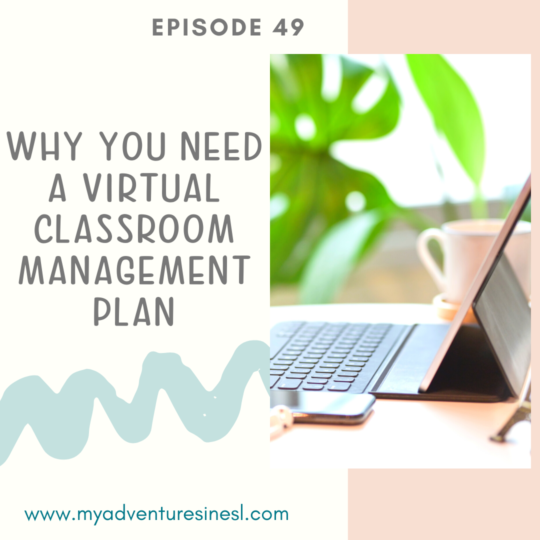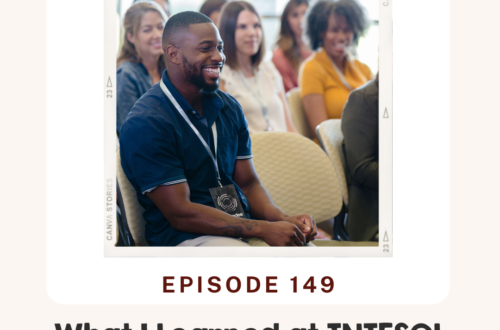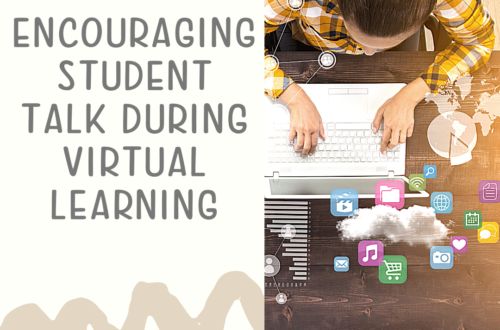
Virtual Classroom Management
Welcome, teachers, I am Millie, and we are officially back. I am excited, as usual, to be here and to share with you all some amazing topics for this upcoming school year. Now, as usual, before we jump into today’s topic, I would like you to take a moment to reflect on any wins that you had for the week. Was there something that you did that you are proud of? Did you attend a professional development? Did you have a light bulb moment about something?
So take a moment to reflect on those. One of the things that I’m being encouraged to do, and I want you all to do the same thing, is to write them down. It’s just something powerful about writing down your wins and writing down your goals. Now, as usual, I want to share a win each week. And the first win of the week comes from an educator in my program from the ESL Teacher Master Plan, and that win goes to Annette. Annette is doing a fantastic job of working through the plan, working through the modules and showing up.
So, Annette, congratulations!! You are an amazing educator, thank you!! Now, we are going to be talking about in today’s podcast why you need a virtual classroom management plan for this school year. I know when I say classroom management, some teachers cringe like, oh my goodness, what does that mean, you trying to say that I do not have control over my classroom? And no, I’m not saying that. So do not turn this post off if you hear the word classroom management.
Sometimes people think, “Oh,that’s new teacher stuff”. No, every teacher. It doesn’t matter if you’ve been teaching for one year or twenty seven years, we all need a classroom management plan. It does not matter if you’re in person or virtual, you still need a classroom management plan. This is why it’s important. You may have students coming into your virtual space or their virtual space with their microphones on. Some might leave in the middle of the lesson.
Others might be having a sidebar conversation to chat about their favorite video games. All of these are potential possibilities that can distract and can take away from your virtual learning with your language learners. Now, this past spring, I went to virtual learning with our school, like many of you all.
I have heard many teachers share their own personal stories about virtual learning. They can range from students screaming into the microphone and to them simply just acting really silly in the chat. When I was coaching teachers on how to teach virtually, the biggest struggle that I noticed was there was a lack of classroom management that was tailored for virtual learning. Now, lacking this structure had students thinking it was just simply a free-for-all in the chat room or when they enter into the virtual space.
A lot of them were playing video games. I know some of them were bringing some of those behaviors from the video game chat room to the chat room that was designed for the classroom. That was something that I had to address in my own classroom as well. Now, some of the aspects that they were bringing, such as enthusiasm, asking questions, and they were supporting those other students in the chat – those are things that I wanted to highlight and amplify and keep.
Now, there were some behaviors that I was noticing in the chat that needed to be addressed with a virtual classroom management plan. So, this upcoming school year really be thinking about this. When I coach the teachers, I ask them a simple question. “What are your expectations for your students when they enter into their virtual classroom?” These teachers then brainstorm what their expectations were for those students. Then after that brainstorming session, they started to create a list of expectations, as when you enter the classroom, turn off the microphone.
Some other topics they brainstorm were staying on topic in the chat, supporting your classmates, staying positive. There were a lot of other positive expectations for their students that they generated. So once this happened and the expectations were actually put in place, there were appropriate consequences.
Teachers started to see a major turnaround in their virtual learning spaces. So I want you to think back on, or think back on your virtual classroom experience. I want to encourage you to brainstorm five to seven expectations that you have for your language learners. You want to keep them around five to seven to avoid a lot of overwhelm. Now, once you have those expectations, then brainstorm some fair consequences if the students do not meet those expectations.
Then, the third step is introduce your expectations to your students and model them. Remember to stay consistent. It’s OK if you need to make changes, give it time to see if it works itself out first. But if it doesn’t, change it. It is OK to do that if you need to do that. So, here are your next steps: I want to encourage you to come up with some expectations for your virtual spaces this week. In my program, the ESL Teacher Master Plan, we did a training where I walked them through step by step how to do this.
When they left that professional development, they had a virtual classroom management plan. I want you to have the same thing. So, go ahead and do this now. Go ahead and work it out, brainstorm those things. Now, I want to ask you your first question: What are some expectations that you use during your virtual learning that worked? Think about those and reflect on those. And then think, “What are some expectations that I have for virtual learning this upcoming school year?”
You can do this, I know you can do this, and keep in mind, if you have any questions, come over to our free Facebook community, My Adventures in ESL and join in, ask questions and engage. We will love to have you there.
So once again, join our free Facebook community, My Adventures in ESL. Once again, thank you for showing up and listening to today’s podcast episode. I hope you have a fantastic school year! Bye.




